Shake, Rattle, and Strum December 13, 2019
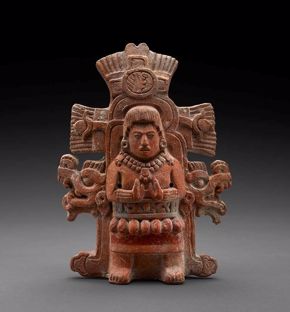
Maya, Figure in Ceremonial Dress Effigy Rattle, 600–900 AD, earthenware with traces of pigment, the Museum of Fine Arts, Houston, gift of Frank Carroll.
Classic Veracruz, Flute with Woman and Shaman Dressed as Feathered Reptile, 600–900 AD, earthenware with traces of paint, the Museum of Fine Arts, Houston, gift of Frank Carroll.
Mangbetu peoples, Anthropomorphic Harp, 1900–1925, wood, hide, sinew, and string, the Museum of Fine Arts, Houston, Museum purchase funded by Frank Carroll in memory of Frank and Eleanor Carroll.
Mangbetu peoples, Anthropomorphic Harp, 1900–1925, wood, hide, sinew, and string, the Museum of Fine Arts, Houston, Museum purchase funded by Frank Carroll in memory of Frank and Eleanor Carroll.
Akan peoples, Ceremonial Gong with Sankofa Bird, 1900–1930, iron, wood, and gold leaf, the Museum of Fine Arts, Houston, gift of Alfred C. Glassell, Jr.
Urhobo peoples, Rattle, 1900–1935, wood, the Museum of Fine Arts, Houston, the Dr. Gus K. Nicholson Collection.
American poet Henry Wadsworth Longfellow deemed music to be “the universal language of mankind,” transcending culture, geography, and time. Musical instruments—the mouthpieces of that melodic language—are marked by prestige and have long connected the living and spiritual worlds.
Every culture known, past and present, has expressed itself in music. The MFAH collections include instruments that embody the intrinsic importance of music worldwide.
600–900 AD | Figure in Ceremonial Dress Effigy Rattle
A mold-made Maya rattle depicts what is likely a ruler in ceremonial dress. The hollow figurine, filled with clay pellets to produce its sound, is adorned with hand-detailing indicative of Jaina Island, an ancient American elite Maya burial site noted for the ceramics excavated there. Though no written music from this culture survives, archaeologists believe rattles may have been played during funerary ceremonies and buried with the deceased for the afterlife.
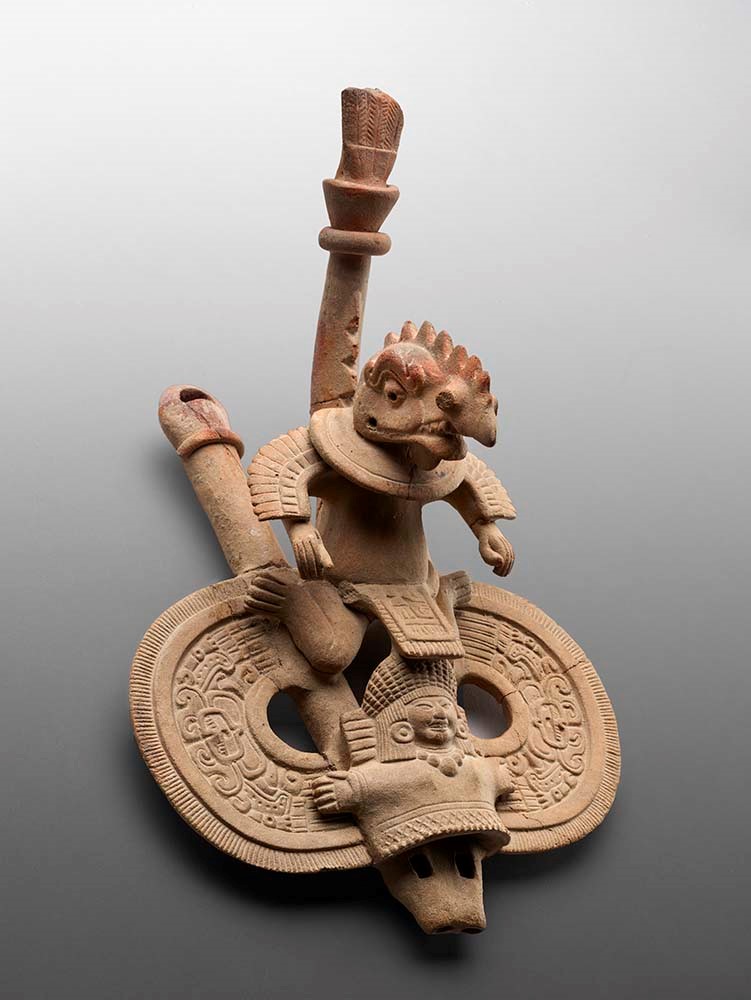
600–900 AD | Flute with Woman and Shaman Dressed as Feathered Reptile
Ceremonious in nature, this tubular duct flute of the Classic Veracruz culture (present-day Central Mexico) features ornamental semicircular disks that surround the figures of a woman in elegant garb and a shaman dressed as a feathered reptile. Veracruz flutes possess clay pellets inside of their chambers, which produce a warbling sound when the instrument is played—though it takes advanced skill to elicit the full range of its auditory features.
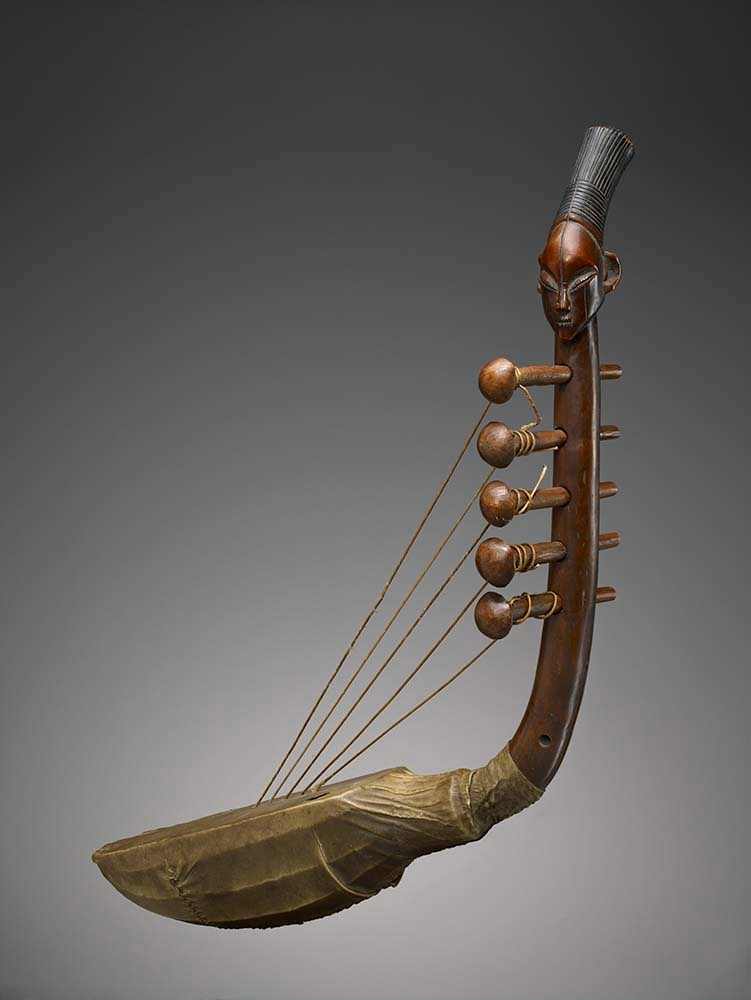
1900–1925 | Anthropomorphic Harp
The elegantly carved head of a high-ranking female extends from the neck of this Mangbetu anthropomorphic harp. The coiffure accentuates her elongated head, achieved by skull binding in infancy, a practice fashionable among Mangbetu rulers in the Democratic Republic of the Congo. Such harps, made of wood, fine threads, and animal hides, accompanied the improvised songs of poets, oral historians, and storytellers.
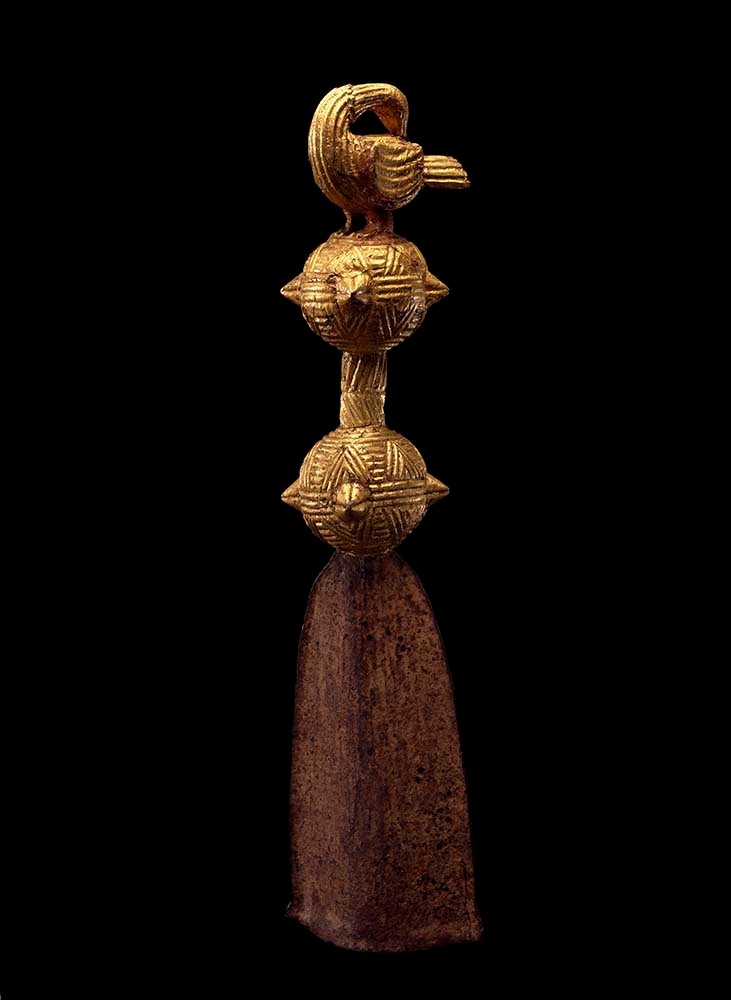
1900–1930 | Ceremonial Gong with Sankofa Bird
A golden Sankofa bird perches atop this Akan ceremonial gong made of iron, wood, and gold leaf—the latter a rarity among gongs of this Ghanaian and Ivorian culture. Gongs are a standard component of the fontomfrom orchestra, the most important of the Akan drum ensembles, and are included in a number of other drum groups as well. The neck of the Sankofa bird is craned backward, a reference to an Akan proverb most frequently translated as “Pick it up if it falls behind,” meaning that if you have forgotten something, you can return to retrieve it—that mistakes can be corrected.
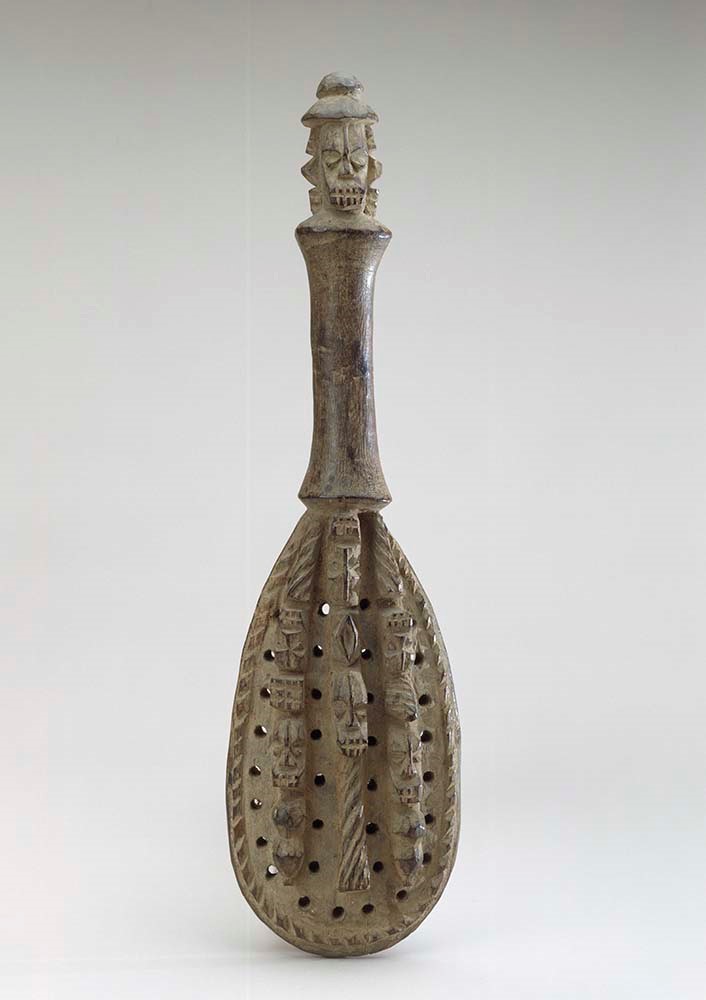
1900–1935 | Rattle
Urhobo priests would shake this wooden rattle, marked by its spatulate blade and haft featuring carved faces, in front of altars while reciting prayers to initiate communication with the spirit world. The Urhobo people of Nigeria believe that life is composed of two inseparable realms: Akpo, the living world; and Erivwin, the realm of the otherworldly gods, spirits, and ancestors. The well-being of the people in Akpo depends upon the good will of the forces in Erivwin, and music is an integral part of keeping that harmonious balance.
► Browse the MFAH collections to learn more—and make your own discoveries, musical or otherwise!





